#mt rainier from the skyline trail
Explore tagged Tumblr posts
Text









PNW faves
#i get to go to these places for free hellooo#well sometimes they require a park or day pass but otherwise!#in order you have:#columbia hills state park#hurricane ridge#mt rainier from the skyline trail#mt rainier skyline trail again#the tubal cain trail#heather lake#green mountain (ironically very snowy)#some dam near wallace falls#and then my beloved staircase rapids trail#self
7 notes
·
View notes
Text
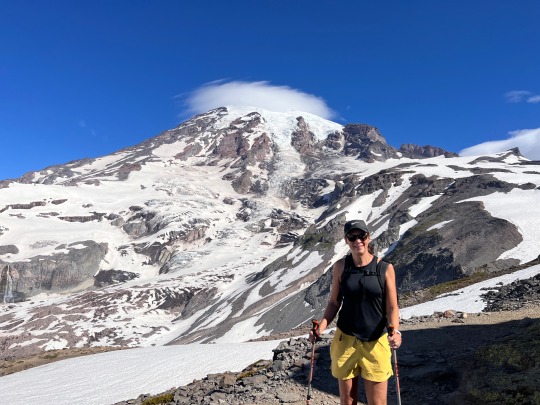
Today we hiked the Rainier Skyline Trail from the Paradise visitors center. The summit was often shrouded in the clouds but occasionally they parted. We also saw several marmots all of whom were completely unconcerned by the hikers just a few feet away. The chipmunks however are very attentive and beg for food by crawling the laps of hikers and trying to get into backpacks.

The trail was covered by snow in several areas so poles came in handy.


This hike is only 5.6 miles but it has a steep ascent which is shared by the hikers who are continuing to Camp Muir and eventually the summit. Even Mt. Adams was briefly visible in the distance above the clouds.
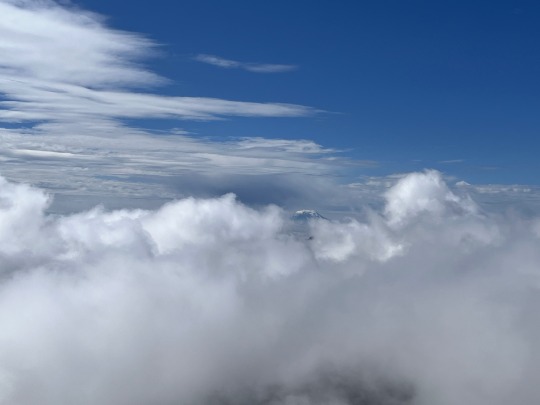


55 notes
·
View notes
Photo

Mt Rainier Skyline trail view from this past fall OC [1153 x923]
15 notes
·
View notes
Text
The Ultimate Guide to Outdoor Adventure at Mount Rainier National Park Washington

by Paige Guscott Discover the thrill of outdoor adventure at Mount Rainier National Park, Washington with our comprehensive guide. From hiking trails to breathtaking views, plan your ultimate escapade today! Join us now and embark on an unforgettable journey..... Introduction Welcome to Mount Rainier National Park Washington, a towering testament to nature's awe-inspiring beauty. Before we set foot on the trails or gaze up at the glacier-capped peaks, let's dive into the rich history of one of America's first national parks. Mount Rainier isn't merely a mountain; it's a place where past and present converge, inviting us to explore not just its landscapes but also its legacy. History of Mount Rainier National Park Washington Photo by WikiImages on Pixabay The story of Mount Rainier stretches back thousands of years, with its first human interactions traced to the Indigenous tribes who viewed the mountain as a spiritual icon. Known as "Tahoma" or "Tacoma" by the Indigenous peoples, this colossal stratovolcano has been a prominent landmark throughout the ages. European-American exploration began in the late 18th century, with the mountain being named after Rear Admiral Peter Rainier by Captain George Vancouver in 1792. Establishment of Mount Rainier as a National Park On March 2, 1899, President William McKinley signed legislation establishing Mount Rainier National Park Washington as America's fifth national park, putting it under the stewardship of the National Park Service. This pivotal moment marked the beginning of a concerted effort to preserve the mountain's ecosystems and cultural heritage. It was an acknowledgment of the park's extraordinary value, not only as a sanctuary for wildlife and flora but also as a source of inspiration and recreation for all those who visit. As we embark on our journey through Mount Rainier National Park, these foundational stories lay the groundwork for all that we will experience. From the first bloom of spring wildflowers to the silent watch of ancient trees, every element here tells a part of Mount Rainier's enduring tale. So, let's lace up our boots, fill our lungs with crisp mountain air, and prepare to be captivated by the park's many wonders, both visible and those tucked away in the folds of history. 5 Facts About Mount Rainier Carving a striking silhouette against the Washington skyline, Mount Rainier holds tales and truths as fascinating as its glaciers are deep. Following the rich history of this natural wonder, here are five intriguing facts that stand out about Mt Rainier: A Peak Like No Other Mount Rainier isn't just another mountain—it's the most glaciated peak in the contiguous United States, boasting 26 major glaciers that cover 35 square miles of its surface. These icy giants serve as the source for six major rivers, which in turn serve as foundational elements to the many different habitats located on and around the mountain. The Emmons Glacier, for example, is the largest single glacier by area, excluding ice fields, in the continental United States, and the Carbon Glacier lays claim to being the thickest and longest. This glacial grandeur not only shapes the side of the mountain but also supports a diverse ecosystem and supplies water to nearby communities. Elevation That Commands Respect Mount Rainier's summit stands proudly at an elevation of 14,411 feet, making it the highest mountain in Washington and the Cascade Range. This elevation doesn't just make for breathtaking views but also means that the weather can be unpredictable and severe. Even in summer, these heights can harbor cold temperatures and snowfall. Climbing to the summit is an adventure that requires preparation, respect for the mountain's power, and acknowledgement of its potential dangers. Volcanic Power Sleeping Beneath Beneath the serene snow-capped peak lies a giant slumbering volcano. Mount Rainier is part of the Pacific Ring of Fire and is considered one of the most dangerous volcanoes in the world, due to its large amount of glacial ice and proximity to metropolitan areas. If awakened, the lahars—volcanic mudflows—could pose significant risks. The mountain's last eruption occurred over a century ago, and while currently quiet, scientists closely monitor its seismic activity for any signs of stirring. A Refuge for Biodiversity Mount Rainier National Park Washington's varied landscapes, from lush rainforests to subalpine meadows, create habitats for a wide array of wildlife. Over 200 species of birds, 65 types of mammals, and a plethora of plants thrive within its boundaries. In spring and summer, the meadows around Paradise explode in color with wildflower blooms—a spectacle which has garnered worldwide fame. The diversity found here is a testament to the park's commitment to conservation and the intricate balance of nature. Human Footprints Across Time Human history on Mount Rainier dates back thousands of years, with Indigenous peoples having forged a spiritual and practical relationship with the mountain long before European settlers laid eyes on it..... Read More... Read the full article
0 notes
Photo

View of Mt. Rainier from Skyline Trail in Paradise.
http://discoverthewest.blogspot.com/2013/09/paradise-found-skyline-trail.html
0 notes
Photo

Mt. Rainier from the Skyline Trail [OC] [4032x3024] via /r/EarthPorn https://ift.tt/3zjUU6d
6 notes
·
View notes
Photo

Mt. Rainier from the Skyline Trail [OC] [4032x3024]
1 note
·
View note
Photo

Mt. Rainier from the Skyline Trail [OC] [4032x3024] via /r/EarthPorn https://ift.tt/3zjUU6d
1 note
·
View note
Text
Mount Rainier, WA
We began this hike is a bang! We hiked the Skyline Trail which is about 6miles and goes up 1500feet in elevation and a must do!!! Wow! This place was breathing AND it was cloudy when we hiked so we didn’t even get to witness the best of the BEST panoramic views! Oddly enough, we hit this National Park at peak flower bloom and WOooW! I was truly stunned with the colors and views of this park. It was a sensory overload! Meadows with colorful wildflowers, plunging waterfalls, snowy passes, and majestic views! Thus far, this has been my favorite hike! I felt like I was in a fairytale and loved every second of it.





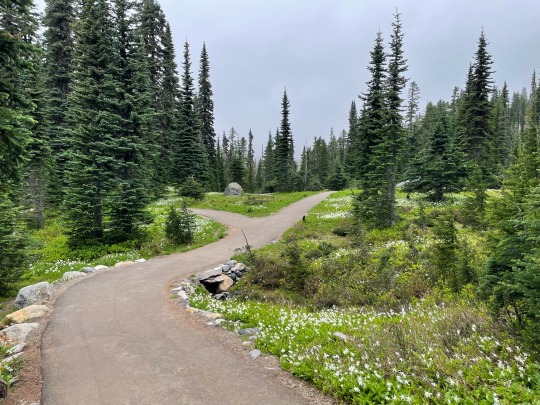
After the hike we visited the visitor center and took a stroll through the historic lodge that was very impressive! We parked next to a guy with a sweeeeet pimped out van who had just skied the Glacier! Ha, I didn’t know that was a thing but you can actually ski on Mt Rainier, a volcanic glacier, all year long! It’s not good skiing but it’s skiing! Mind blown, ha! When we finished our sight seeing and hiking for the day we headed back to our campsite which was 20 minutes outside the park called Big Creek. We scored a great first come, first serve for a few nights here because the National Park sites we packed!
We had a lazy morning the next day. I got to read my book, take Loki for a stroll, and make a yummy egg scramble while Pearce worked! I love a slow relaxing morning!! By lunch time we headed out to our first hike of the day, High Rock. It was 45 minutes away from our campground but mainly because you have to take a gravel road to get there. We threw our snacks in a bag, filled our waters, and headed up. High Rock is not a very unique name because the final destination was truly a HIGH Rock! We hiked up 1500 ft again but in a much shorter amount of time. It was steep but worth it in the end. At the top the views were unreal and it was a full 360 view! We had a crystal clear view of 4 cascade volcanos in one sitting! Mt Rainier was clearly the closest but as you looked around you could see Mt. Adams, Mt Saint Helens, and Mt Hood! The views were were jaw dropping!

When we finished that hike we hopped back into the car and headed back into the National Park. We drove to the Grove of the Patriarch’s which was an easy forest path hike along the Ohanapecosh River. We had to cross this suspension bridge over to an island that had the giant trees. It was a very odd suspension bridge that was supposed to only hold one person at a time , poor engineering, so both ends had a long line. It was pretty ridiculous if you ask me! This hike was subpar to us especially having just come from the Redwoods. We know BIG trees and these 1000 year old trees we meehhhh allright!
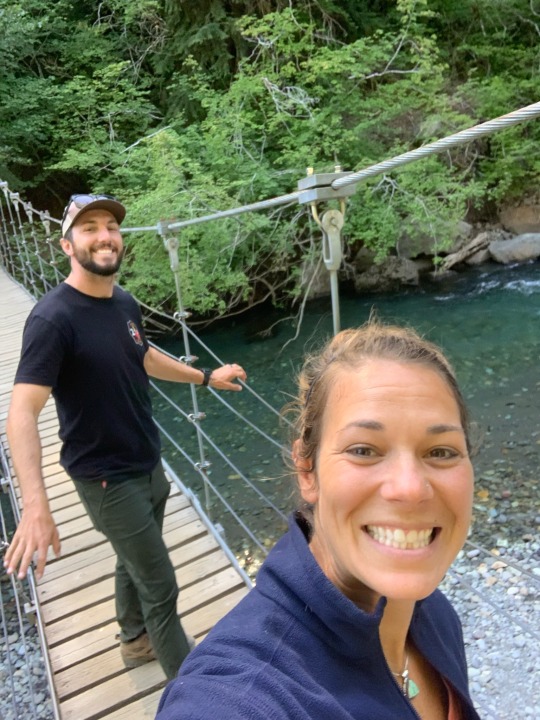

We did a lot of driving today but the drives were all so beautiful it didn’t really matter. Overall, Mt Rainier was amazing and there is soooo much more to hike, climb, ski, and do that we didn’t get too. It’s hard to see it all with a world so big but we did a pretty good job for the short time we had. If you get a chance to go here, go!
1 note
·
View note
Photo

Mt. Rainier as seen from its Skyline Trail - Washington State USA (OC) (2048x1365) via /r/EarthPorn https://ift.tt/2Vy38ap
1 note
·
View note
Video
from where we've come by Danielle Nelson Via Flickr: Mt. Rainier's Skyline Trail in its summery (buggy!) prime. Image made with my Innova 6x9 Pinhole.
#film#analog#innova 6x9 pinhole#pinhole#landscape#mt. rainier#mt. rainier national park#washington#pnw#pacific northwest#hike#hiking#trail#path#summer#wildflowers#mountains#alpine#forest#hills#valley#meadow
2 notes
·
View notes
Video
From the archives Via Flickr: Tahoma from the Skyline Trail in Mt. Rainier National Park
#Cascade Range#Skyline Trail#Tahoma#Mount Rainier#Mount Rainier National Park#Pierce County#Washington
1 note
·
View note
Text
The Ultimate Guide to Outdoor Adventure at Mount Rainier National Park Washington

by Paige Guscott Discover the thrill of outdoor adventure at Mount Rainier National Park, Washington with our comprehensive guide. From hiking trails to breathtaking views, plan your ultimate escapade today! Join us now and embark on an unforgettable journey..... Introduction Welcome to Mount Rainier National Park Washington, a towering testament to nature's awe-inspiring beauty. Before we set foot on the trails or gaze up at the glacier-capped peaks, let's dive into the rich history of one of America's first national parks. Mount Rainier isn't merely a mountain; it's a place where past and present converge, inviting us to explore not just its landscapes but also its legacy. IntroductionHistory of Mount Rainier National Park Washington Establishment of Mount Rainier as a National Park A Peak Like No Other Elevation That Commands Respect Volcanic Power Sleeping Beneath A Refuge for Biodiversity Human Footprints Across Time Flora: A Tapestry of Plants Fauna: Creatures Great and Small Adrenaline-Pumping Activities Hiking Trails for All Levels Safety Measures and GuidelinesEncounters with Wildlife Respect the Environment The Rich History of Mount Rainier National Park Washington Indigenous Communities and Preservation Educational Opportunities for Visitors Inside the Park: Historic Inns and Wilderness Camps Near the Park: Cabins, Lodges, and Resorts Camping and RV Sites Backcountry Camping for the Adventurous Permits, Camping Options, and Visitor Centers Best Times to Visit and Weather Conditions Hidden Gems within the Park Learning More About Mount Rainier National Park Contributing to Mount Rainier National Park History of Mount Rainier National Park Washington Photo by WikiImages on Pixabay The story of Mount Rainier stretches back thousands of years, with its first human interactions traced to the Indigenous tribes who viewed the mountain as a spiritual icon. Known as "Tahoma" or "Tacoma" by the Indigenous peoples, this colossal stratovolcano has been a prominent landmark throughout the ages. European-American exploration began in the late 18th century, with the mountain being named after Rear Admiral Peter Rainier by Captain George Vancouver in 1792. Establishment of Mount Rainier as a National Park On March 2, 1899, President William McKinley signed legislation establishing Mount Rainier National Park Washington as America's fifth national park, putting it under the stewardship of the National Park Service. This pivotal moment marked the beginning of a concerted effort to preserve the mountain's ecosystems and cultural heritage. It was an acknowledgment of the park's extraordinary value, not only as a sanctuary for wildlife and flora but also as a source of inspiration and recreation for all those who visit. As we embark on our journey through Mount Rainier National Park, these foundational stories lay the groundwork for all that we will experience. From the first bloom of spring wildflowers to the silent watch of ancient trees, every element here tells a part of Mount Rainier's enduring tale. So, let's lace up our boots, fill our lungs with crisp mountain air, and prepare to be captivated by the park's many wonders, both visible and those tucked away in the folds of history. 5 Facts About Mount Rainier Carving a striking silhouette against the Washington skyline, Mount Rainier holds tales and truths as fascinating as its glaciers are deep. Following the rich history of this natural wonder, here are five intriguing facts that stand out about Mt Rainier: A Peak Like No Other Mount Rainier isn't just another mountain—it's the most glaciated peak in the contiguous United States, boasting 26 major glaciers that cover 35 square miles of its surface. These icy giants serve as the source for six major rivers, which in turn serve as foundational elements to the many different habitats located on and around the mountain. The Emmons Glacier, for example, is the largest single glacier by area, excluding ice fields, in the continental United States, and the Carbon Glacier lays claim to being the thickest and longest. This glacial grandeur not only shapes the side of the mountain but also supports a diverse ecosystem and supplies water to nearby communities. Elevation That Commands Respect Mount Rainier's summit stands proudly at an elevation of 14,411 feet, making it the highest mountain in Washington and the Cascade Range. This elevation doesn't just make for breathtaking views but also means that the weather can be unpredictable and severe. Even in summer, these heights can harbor cold temperatures and snowfall. Climbing to the summit is an adventure that requires preparation, respect for the mountain's power, and acknowledgement of its potential dangers. Volcanic Power Sleeping Beneath Beneath the serene snow-capped peak lies a giant slumbering volcano. Mount Rainier is part of the Pacific Ring of Fire and is considered one of the most dangerous volcanoes in the world, due to its large amount of glacial ice and proximity to metropolitan areas. If awakened, the lahars—volcanic mudflows—could pose significant risks..... Read More... Read the full article
0 notes
Text
Year in Review: Best of Our Peripatetic Road Trip
We had hoped our travels would help us to get to know the U.S. a bit more, and maybe even stumble upon new places where we might want to spend more time in the future. There is still so much for us to explore, even within the places we visited, but on the one-year anniversary of the start of our travels, this post is about the highlights of our peripatetic year.
CITIES
Best Overall City: Bend (OR)

Deer hanging out in our front yard in Sunriver (where we stayed, 20 mins from Bend)
Most Underrated City: Houston

Most Overrated City: New Orleans

Walking around the French Quarter in early February
Least Favorite City: El Paso (Runner Up: Wichita (KS))
Most Random Town: Marfa (TX)
Quirkiest City: Missoula (MT)

Best Drivers: Seattle
Worst Drivers: El Paso or Los Angeles
Worst Traffic: Los Angeles (Runner Up: Phoenix)
Best Downtown Parking: Scottsdale
Worst Downtown Parking: Seattle
Cleanest City: Phoenix/Scottsdale
Dirtiest City: Portland
Friendliest People: Portland
Scariest Dogs: El Paso
Most Cautious about COVID-19: Seattle
Least Cautious about COVID-19: Shreveport (LA) (Runner Up: Oklahoma City)

Most Scenic: Bend (Runner Up: Missoula)

We didn’t take many photos of Bend itself, but the stunning Painted Hills were a ~2 hour drive from Bend

Missoula
Best Access to the Outdoors: Denver (Runners Up: Missoula, Seattle)
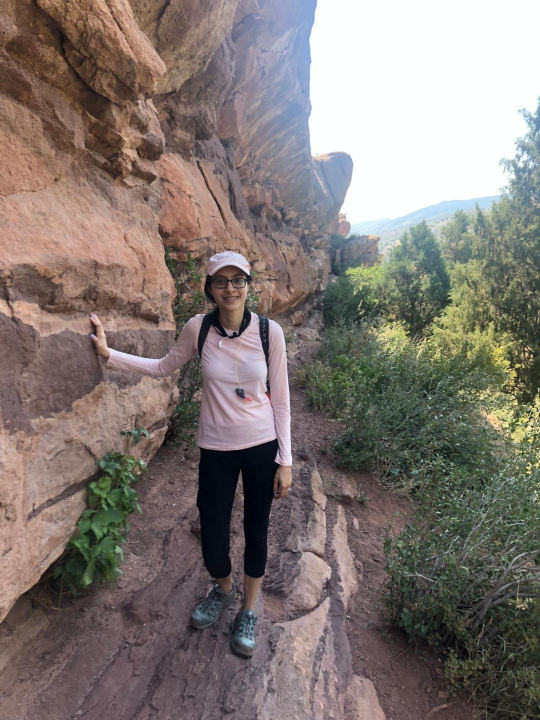
Hiking at Red Rocks near Denver
Most History: Montgomery

Nicest State Capitol: Oklahoma City

FOOD & DRINK
Best Overall Vegan/Vegetarian Food: Portland or Los Angeles

The garlic knots at Virtuous Pie were incredible
Most Unexpectedly Good Meal: Sabai Thai (Port Angeles, WA)
Best Tex Mex: Austin (obvi)
Best Brewery Scene: Bend

We were partial to the Ludwig at Deschutes Brewery in Bend
Best Cocktails: Portland (specifically a phenomenal bar called Deadshot)
NATIONAL PARKS
Best National Park: Yellowstone (Runners Up: Glacier, Banff)

Yellowstone
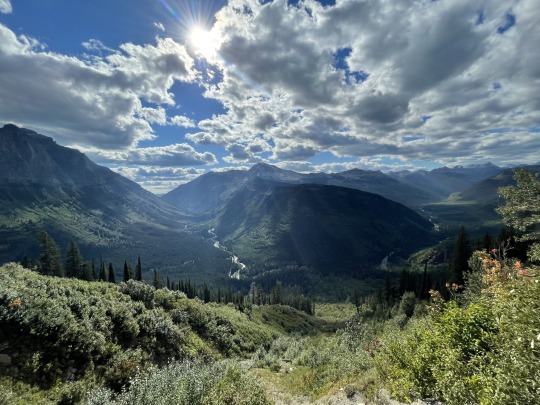
Glacier
Most Underrated National Park: Big Bend (Runner Up: Guadalupe Mountains)

Hiking at Big Bend

Guadalupe Mountains was surprisingly awesome as well!
Least Favorite National Park: Hot Springs (Runner Up: Everglades, but way nicer than Hot Springs)

The best view we could find at Hot Springs
Best National Park Town: Banff (Runners Up: Jackson Hole (WY), Port Angeles (WA))

Least Favorite National Park Town: Packwood, WA (by Mount Rainier)
Best Hike: Grinnell Glacier Trail (Glacier) or Skyline Trail (Mount Rainier) (Runner Up: Teahouses Trail at Banff National Park)

Grinnell Glacier
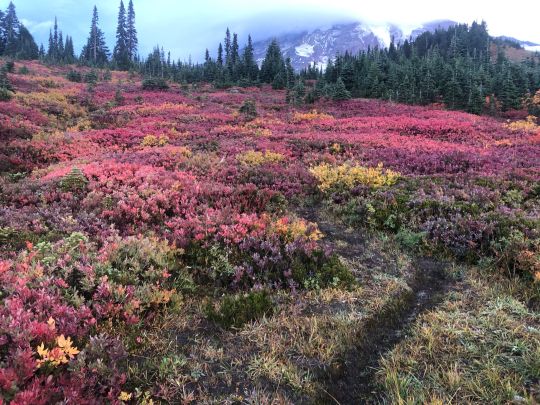
Wildflowers along the Skyline Trail in September
Best Lakes: Lake Louise & Lake Agnes at Banff (Runner Up: Crater Lake (OR))

Lake Louise
Best Waterfall: Takakkaw Falls (Yoho National Park)

Best Camping: Big Bend (Disclaimer: We only camped at a few places...but they were all pretty awesome)
Most Variety: Yellowstone
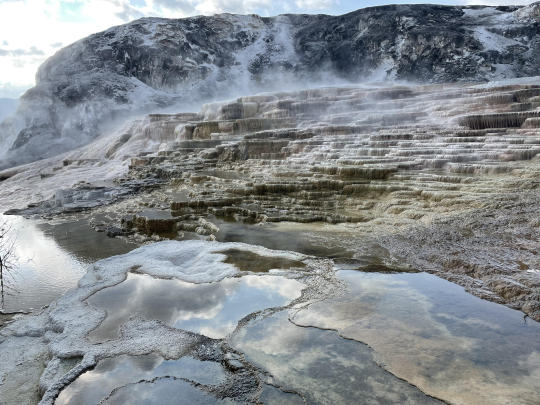
Best Wildlife: Yellowstone (Runners Up: Glacier, Rocky Mountain)

Bison in Yellowstone
Highest Elevation: Rocky Mountain
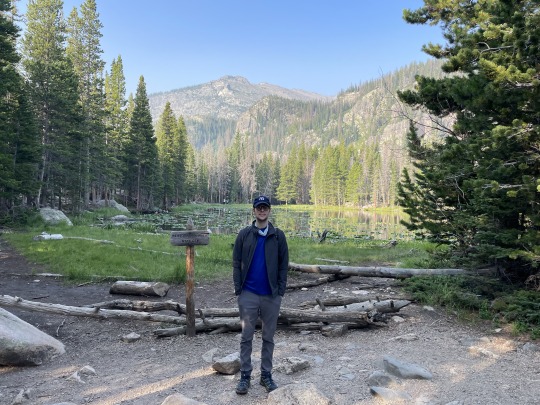
OTHER
Prettiest Drive: From Denver to Jackson Hole or From Yellowstone to Livingston (MT) (Runner Up: Flagstaff to Abilene via Gallup, NM)
Prettiest Non-National Park Hiking: Sedona

Best City Hike: Camelback Mountain in Phoenix

Best Botanical Garden: Phoenix (Runner Up: Denver)
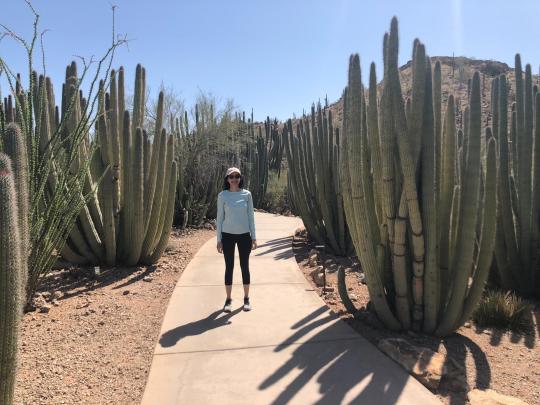
Best Water Experience: Tubing in Missoula (MT)
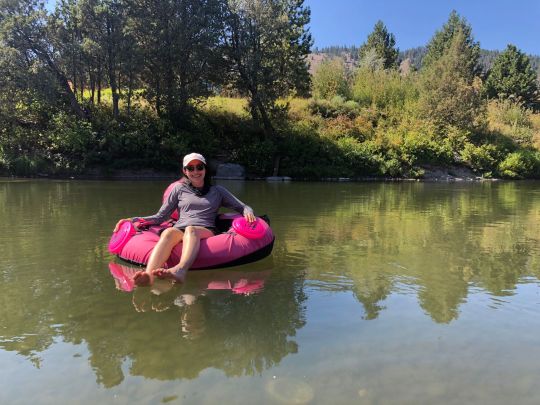
Best Sand: White Sands National Park (NM)

Best Beach: Rialto Beach (Olympic National Park)

Best Cave (only cave?): Carlsbad Caverns National Park (NM)

Best Island: Bainbridge Island (WA)
Best Pier: Couer d’Alene (ID)
Best Airbnb: Woodstock (GA)
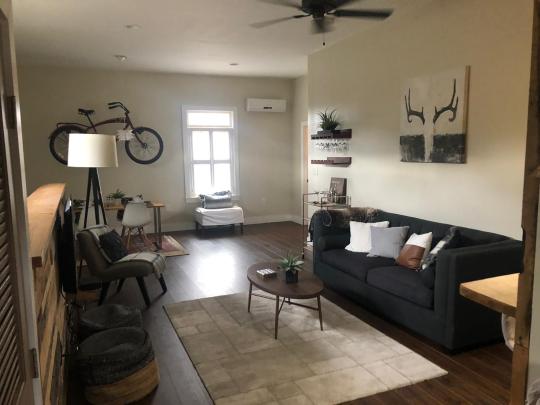
Our cozy living room in Woodstock, GA
0 notes
Photo

Mt. Rainier from the Skyline Trail [OC] [4032x3024] via /r/EarthPorn https://ift.tt/3zjUU6d
0 notes
Photo

Mt. Rainier from Skyline trail
From right to left:
Nisqually Glacier Fuhrer Finger + Fuhrer Thumb Van Trump Glaciers Wilson Glacier Kautz Glacier
0 notes

